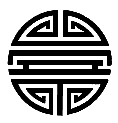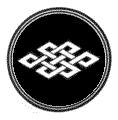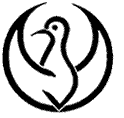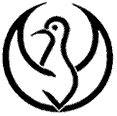 |
|||||||
|
|
|||||||
|
|
|||||||
|
|
|
 |
|
|
|||||||||||
|
History of Advanced Manual - Medicine |
|||||||||||
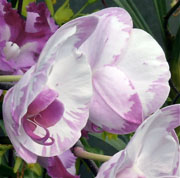 |
Integrative Neuromuscular Therapy |
||||||||||
|
There is a common misperception that bodywork therapy and neuromuscular therapy (NMT) or any other serious system of healing is somehow a new age invention of recent times. There is, however, ample evidence that hands-on healing methodologies have been an integral part of the human experience for thousands of years, in the opinion of many authorities, for as long as human beings have been living on the earth. The ancient history of the Orient, (especially China), Egypt, Rome, North and South America, India as well as most nomadic tribes and shamanistic healers have used some form of bodywork to ease the accumulated stress and strain of physical existence. Healing traditions have been used by humanity for centuries: Cross cultural theme of all the healing traditions: The first recored mentioning of the bodywork was in China in a very famous text called the YELLOW EMPEROR CLASSIC. The ancient Vedas Vedas of India prescribed bodywork for many ailments. In China, the AH SHI POINTS closely parallels neuromuscular therapy but pre-dates official mention of NMT by thousands of years. Early Western physicians: Hippocrates, Avicenna, Galen and many others employed bodywork and related techniques in their work. Evidence of sophisticated bodywork modywork methods are found in Egyptian scolls, depicting types of advanced deep tissue bodywork. More recently in the West, the first medical descriptions of neuromuscular trigger points were made by a German physician, Dr. Froeriep in 1843. The Swedish doctors, Helleday and Kleend contributed also to this body of knowledge. In 1892 , Dr. Hoffa named these regions trigger points. Significant contributions were made by Schade and Schade and Frizlong in 1921, each of them describing similar points and referral zones while working independently of each other on different types of people with dissimilar diseases. Max Lange wrote the first treatment manual in 1913 and did significant experiments. Lange used a devise to measure pressure and tension in muscles called a sklerometer. Measuring over 250 regions on several symptom free and healthy individuals he found that the healthy muscle tissue was homogenous, resilient and could take heavy pressure without pain. He also found that in healthy subjects, the pressure readings in the muscles were very consistent and did not vary more than 10 %. In muscles with trigger points and myofascial pain, the resilient nature of the the tissue was interrupted and lost. .Biopsies of tissue with trigger points showed microscopic changes in the muscles at the trigger point sites: increase in fibrous tissue, cross-linking of collagen fibers, fatty infiltration of the area, and increase deposits of metabolites. Schade demonstrated that hard areas of trigger points remained even under anesthesia and after death. It is the honor of Advanced Manual Medicine to pass on the ancient healing art traditions. These timeless skills are more in demand than they ever were. The modern and mechanized society becomes, the more the need exists for healing, human touch. Integrative Neuromuscular Therapy
Neuromuscular Therapy (NMT) is a precise, scientific method of manual therapy applied to the myofascial/soft tissue system which has evolved over the last 65 years from the original founders of this work: Dr. Raymond Nimmo D.C. and Dr.Vannerson D.C. NMT utilizes specifically applied pressure which interrupts nerve impulses. to the spinal cord, reducing the intensity of the sympathetic nervous system and activated injury patterns. Direct pressure on the causation of the chronic pain pattern mechanically forces out toxic irritants which have accumulated at nerve receptor sites. NMT often dramatically increases flexibility, balance, strength and vital life energy by interrupting the facilitated pain pathways, improving circulation of the system of muscles existing in the deeper levels. By its very nature of systematic and specific pattern of application, the methods of NMT offer efficient treatment for chronic myofascial (soft-tissue) pain with an enormous potential for improving the quality of one's life. Neuromuscular Therapy is a safe, effective treatment for chronic pain, stress and injuries. Often results, benefits and improvements occur when the person has been told by medical authorities: " Learn to live with the pain, there is no hope for you to ever get better, this is just part of growing older" Quoting the famous Dr.Bernard Jenson "There are no incurable diseases, just incurable patients" The Origin Of Deep Pressure Therapy
Neuromuscular Therapy is a specialized form of deep pressure therapy which originates in the Oriental Healing Arts of Acupuncture and Shiatsu. In Jaoan, Shi means finder and Atsu means pressure. Western science has utilized the fundamental principles of Oriental Pressure Therapies for many years. Incorporating a broad base of ancient techniques into current forms of body therapies, eminent scientists, physicians and skilled therapists have employed sound physiological laws to obtain the desired results of normalizing chronic pain patterns. Neuromuscular Therapy incorporates both Eastern and Western manual therapies.
Myofascial trigger points are present in nearly everyone. Trigger Points are the nervous system's response to trauma, as the nervous system participates in all disease states. The definition of trigger points: a focus of hyper-irritability in a tissue (usually muscle or tendon) that when compressed is locally tender and hypersensitive; creating a referred pain to a distal area. Trigger points develop due to direct trauma, repetitive over-use syndrome and stress in all forms. Poor diet and exercise patterns can be secondary factors. The voluntary skeletal muslces make up the largest organ of the body and are directly controlled by the nervous system. Any one of the 684 muscles--more than 40% of the body's weight--can develop trigger points that refer pain and distressing symptoms to other body areas.. Among the effects of trigger points are: **Pain, tingling and/or numbness to any body area **stiffness, limited range of motion for joint areas **fatigue, low energy **insomnia, restlessness, anxiety **depression, mental confusion, lack of motivation Neuromuscular Therapy offers an efficient treatment for trigger points, due to the time saving adaptability which by assessment can be treatment with the slight variation of pressure and techniques.. Trigger points are functioning 24 hours a day, 7 days a week and are for one's life-time unless correctly treated. Under most circumstances, trigger points are self perpetuating and require a series of treatments for full recovery. |
|
|
|||
|
Call for an Appointment: |
|||
| [Home] [Instruction] [Styles] [Sessions] [Instructor] [Contact] |
|
Copyright 2024 For more information please contact: peggyd@manual-medicine.com |
